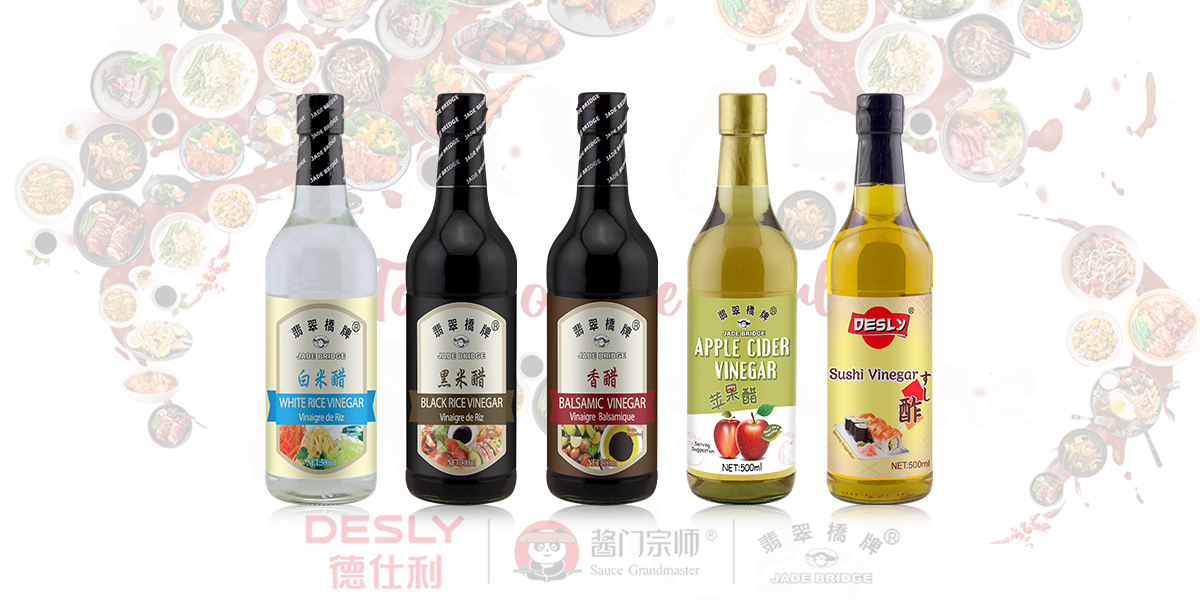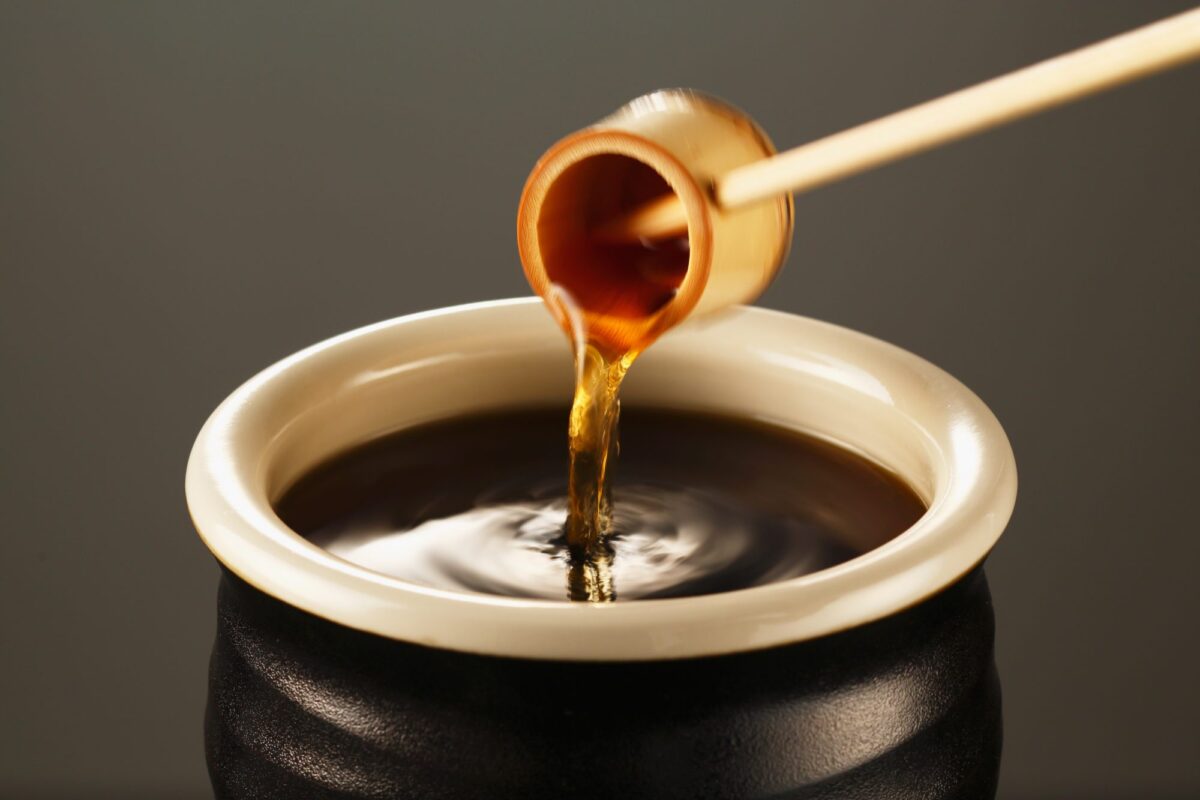Can you distinguish and recognize these 7 kinds of vinegars?
Vinegar has a history of more than 3,000 years according to the existing literature. In ancient China, “vinegar” was called “酢” (pronounced “zuo”), glutinous rice, bitter wine, etc. During the Zhou Dynasty, there were full-time “Vinegars”, that is, vinegar brewing technicians, who made vinegar for the Zhou royal family. To this day, Japan still calls vinegar with the word “酢”.
Many people have eaten vinegar, but they do not necessarily understand vinegar! Don’t be confused anymore. Today, we will open the “door” of the vinegar industry and talk about how to distinguish between rice vinegar, mature vinegar, old vinegar, balsamic vinegar, white vinegar, and fruit vinegar.
1. Appearance distinction
From the appearance, these kinds of vinegar can be distinguished simply and rudely. Rice vinegar and white vinegar are relatively clear, very clear and translucent. And mature vinegar, old mature vinegar and balsamic vinegar, are brown. Fruit vinegar will show different colors in different juices.

2. Define the distinction
Vinegar made from rice (glutinous rice, japonica rice, indica rice, the same below) as the main raw material and brewed by solid or liquid fermentation process;
- Mature vinegar:
Grain and grain vinegar is made from sorghum as the main raw material and Daqu as the starter. It is fermented with solid acetic acid and aged. The process is also the same as that of ordinary vinegar, except that it has undergone an aging process, such as the traditional process of “scorching in summer and freezing in winter”. Its vinegar has less water content, strong color and fragrant taste. The quality is unmatched by other vinegars, and it can be stored for a long time, so it is called mature vinegar;
- Old vinegar:
It is also old mature vinegar, the brewing time is longer than that of mature vinegar, and the acidity is higher than that of mature vinegar. Generally, the acidity of mature vinegar is 4 degrees, and the acidity of old vinegar, that is, old vinegar, should reach 6 degrees;
- Balsamic vinegar:
Grain and grain vinegar is made from glutinous rice as the main raw material and Xiaoqu as a starter, and is fermented with solid layered acetic acid and aged;
- White Vinegar:
Except for 3-5% acetic acid and water, it contains no or very few other ingredients. It is made from distilled wine and fermented. The price of white vinegar is generally very cheap;
- Fruit vinegar:
Also called fruit juice vinegar, it is a brewed vinegar made from various fruits as the main raw material. All kinds of apple cider vinegar, grape vinegar, coconut vinegar, date vinegar, etc. that can be seen at ordinary times belong to fruit vinegar;
Notable uses include sushi, vinegared dishes and condiments. ・Because it is called “so (miso)”, it is a common Japanese condiment.

3. Use distinction
Rice vinegar: can pickle radishes, vinegar eggs; season sour dishes such as fried rice, etc.; can also wash face, soak feet;
Mature vinegar: used for cold dishes, such as cold noodles; it can also be used to dip dumplings;
Old vinegar: used for cold dishes, such as vinegar soaked peanuts;
Balsamic vinegar: suitable for stir-frying, such as hot and sour cabbage;
White vinegar: for pickling kimchi
Fruit vinegar: It can pickle vegetables such as yam and lotus root slices; it can also be drunk directly with water to cool and quench thirst;
The Four Vinegar Capitals
Chinese vinegar is famous for Shanxi old mature vinegar, which can be called the ancestor of vinegar. In addition, Chinese famous vinegars include Zhenjiang balsamic vinegar, Baoning vinegar, Yongchun old vinegar, collectively referred to as the “Four Famous Vinegars in China”. It has been handed down from the Qing Dynasty to the present. These four places are also called “Four Vinegar Capitals”.
Qingxu is a county under the jurisdiction of Taiyuan, Shanxi Province, the hometown of the great writer Luo Guanzhong, known as the “Portuguese Township” and “Vinegar Capital”. The birthplace of Shanxi old mature vinegar has the reputation of being the best vinegar in the world. It has a history of more than 3,000 years in making vinegar.
Zhenjiang is a prefecture-level city in Jiangsu, and it is a famous land of fish and rice in the south of the Yangtze River. Zhenjiang vinegar has only a history of more than 100 years, but it became famous at a young age because of its sour but not astringent, fragrant and slightly sweet, strong color and fresh taste, and the more it is preserved, the more mellow. and other characteristics and has won many awards.
Langzhong is a county-level city in Nanchong, and the ancient city of Langzhong is very famous. Langzhong was called Baoning in ancient times, and Baoning vinegar was called “Oriental Magic Vinegar”.
Yongchun is located in the southwest of Fujian and is a county under the jurisdiction of Quanzhou. Yongchun has many names. Yongchun old vinegar is famous for its brown-black color, sweet acidity, mellow and refreshing taste, and long-term storage.

Dan
Like food, like to enjoy life
